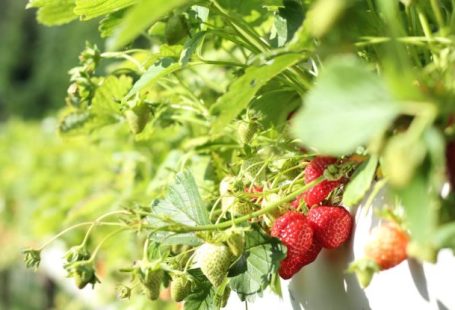Integrating Permaculture Principles in Your Garden
Permaculture is a sustainable approach to designing human settlements and agricultural systems that mimic the relationships found in natural ecosystems. By incorporating permaculture principles into your garden, you can create a harmonious and productive space that benefits both you and the environment. Here are some key ways to integrate permaculture principles into your garden.
Observation and Interaction
One of the fundamental principles of permaculture is observation and interaction. Before making any changes to your garden, take the time to observe the natural patterns and processes at work. Notice where the sunlight falls, how water flows through the landscape, and which plants thrive in different areas. By understanding these patterns, you can design your garden to work with nature rather than against it.
Designing for Multiple Functions
A key permaculture concept is designing for multiple functions. Instead of growing plants in isolation, consider how they can work together to create a more resilient and productive system. For example, planting flowers that attract beneficial insects near your vegetable garden can help control pests naturally. Additionally, incorporating fruit trees into your landscape not only provides food but also creates shade and habitat for wildlife.
Using Renewable Resources
Another important permaculture principle is using renewable resources. Instead of relying on synthetic fertilizers and pesticides, focus on building healthy soil through composting and mulching. Compost kitchen scraps and yard waste to create nutrient-rich soil amendments that will nourish your plants and reduce waste. Mulching with organic materials like straw or leaves helps retain moisture, suppress weeds, and improve soil structure.
Creating Zones and Sectors
Zoning and sector planning are key design concepts in permaculture. By dividing your garden into zones based on how often they are visited and the resources they require, you can create a more efficient and productive space. Place high-maintenance areas like vegetable gardens close to your home for easy access, while low-maintenance areas like fruit trees can be located further away. Consider the natural elements that impact your garden, such as sunlight, wind, and water flow, when planning your layout.
Embracing Diversity
Diversity is essential in a permaculture garden. By growing a wide variety of plants, you can create a more resilient ecosystem that is better able to withstand pests, diseases, and extreme weather conditions. Mix annuals and perennials, herbs and vegetables, flowers and fruit trees to create a balanced and diverse planting scheme. Encourage biodiversity by providing habitat for beneficial insects, birds, and other wildlife.
Capture and Store Energy
Permaculture emphasizes the efficient use of energy in the garden. By capturing and storing energy from the sun, wind, and water, you can reduce your reliance on external resources. Install rain barrels to collect water for irrigation, use solar panels to power garden lights or pumps, and plant windbreaks to protect your garden from strong winds. By harnessing natural energy sources, you can create a more sustainable and self-sufficient garden.
Conclusion
By integrating permaculture principles into your garden, you can create a beautiful, productive, and sustainable space that benefits both you and the environment. By observing natural patterns, designing for multiple functions, using renewable resources, creating zones and sectors, embracing diversity, and capturing and storing energy, you can create a garden that works in harmony with nature. Start small, observe, and learn from your garden, and gradually incorporate more permaculture practices into your gardening routine. With time and patience, you can transform your garden into a thriving ecosystem that nourishes both body and soul.





